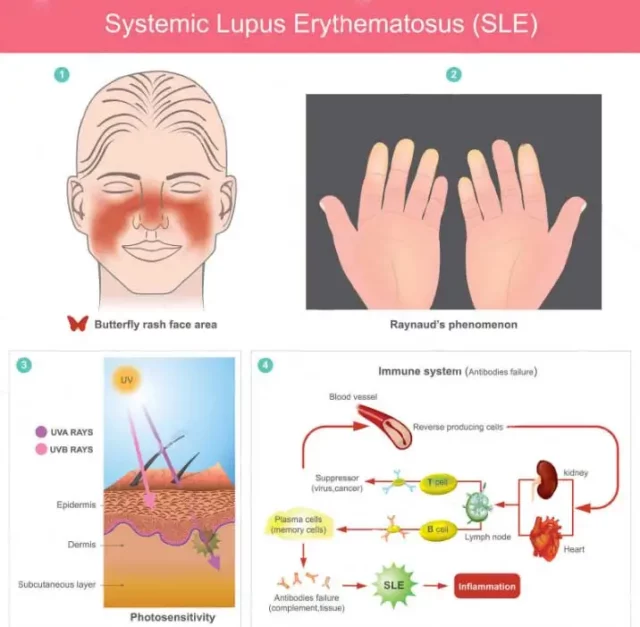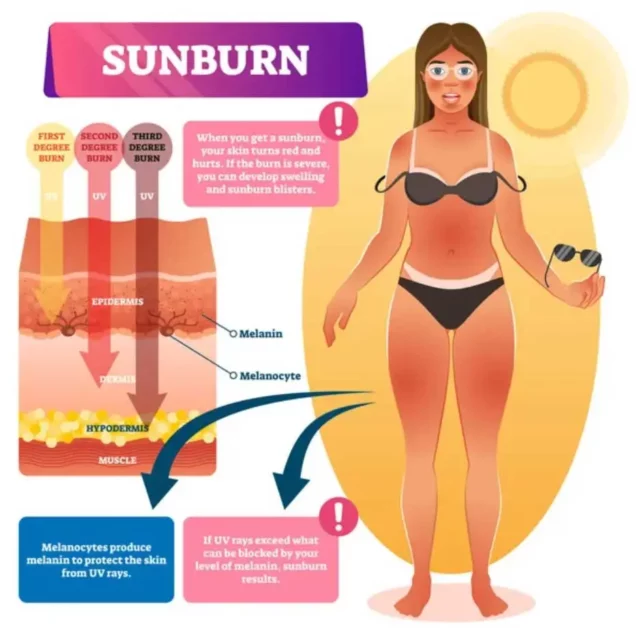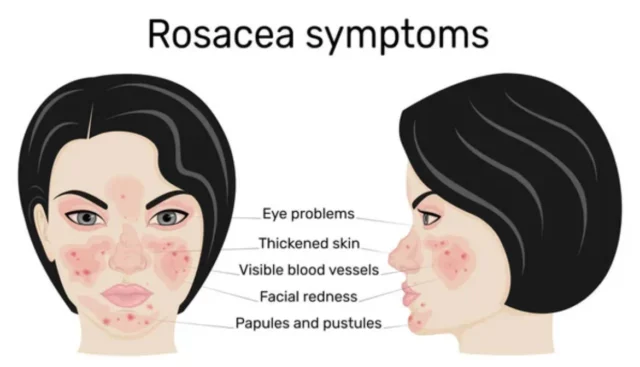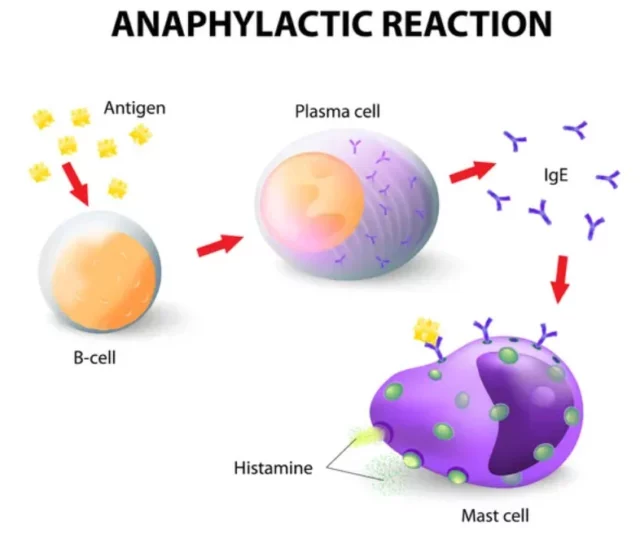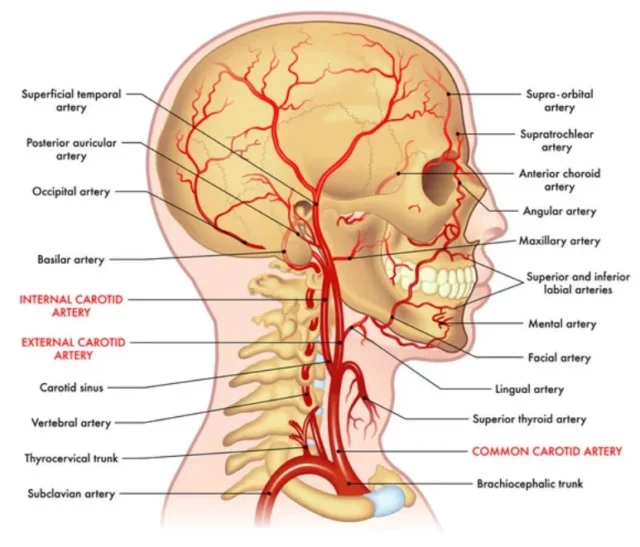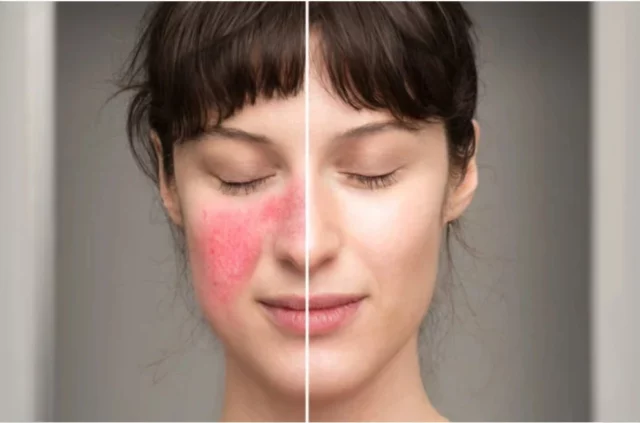If you’ve ever experienced sudden heat and sweating in your face and neck, you’re not alone. Facial flushing can happen to anyone, often triggered by changes in temperature, emotional states like anxiety or embarrassment, or hormonal changes. While uncomfortable, these symptoms are usually benign. However, facial flushing and excessive sweating can sometimes indicate a more serious underlying condition that requires attention. Understanding the cause of your symptoms is crucial for finding appropriate treatment and preventing potential complications.
In this guide, we will explore the nature of facial flushing, its common causes, and when it’s important to seek medical advice. We will also examine how NextPain Care’s comprehensive approach targets pain from systemic inflammation, addressing the root cause of these symptoms.
What Is Facial Flushing?
When your face, neck, or chest suddenly feels hot to the touch and appears reddened, you may be experiencing facial flushing. This phenomenon occurs due to increased blood flow, a result of vasodilation – the widening of blood vessels beneath the skin’s surface.
Vasodilation allows more blood to flow through, triggered by emotional changes like anxiety, anger, or embarrassment, as well as physical exertion, menopause, or certain medical conditions. This increased blood flow often creates a warm sensation around the face, particularly in the cheeks, neck, and upper chest. You may notice red patches, visible blood vessels, raised skin bumps, and excessive sweating accompanying this symptom.
While terms like flushing, blushing, and facial rashes are sometimes used interchangeably, there are subtle distinctions:
- Blushing refers to involuntary reddening of the face due to emotional or psychological triggers, common in individuals with social phobia or anxiety disorders.
- Flushing involves a more severe and prolonged reddening of the face, formally known as “idiopathic craniofacial erythema,” which can occur with or without excessive sweating (dry flushing).
- Facial rashes involve breakouts, inflammation flare-ups, or skin lesions, often accompanied by redness, warmth, scaliness, bumps, itchiness, or dryness.
Although facial flushing is typically not life-threatening, it should not be ignored. In less severe cases, it may cause embarrassment and discomfort, especially in social settings. However, in more severe instances, it can indicate an underlying chronic condition requiring specialized treatment.
Does Facial Flushing Lead To Sweating?
Flushing and excessive facial sweating are two distinct symptoms that are frequently linked. Notably, increased perspiration (sweating) is believed to result from an overactive sympathetic nervous system. This part of the nervous system is responsible for regulating glands, organs, and the diameter of blood vessels in the face. Sympathetic overload can stem from various conditions, including certain cancers, but it is often connected to emotional states such as excessive stress and overstimulation. Additional causes of an overactive sympathetic nervous system include:
- Insufficient sleep and sleep disorders
- Poor dietary choices, influenced by the gut-brain axis (the bidirectional connection between the central nervous system and the gastrointestinal system)
- Chronic pain and systemic inflammation
Issues with the sympathetic nervous system can also lead to other symptoms, including increased heart rate, abnormal breathing patterns, higher blood pressure, flushing, and goosebumps.
Apart from an overactive sympathetic nervous system, facial flushing and sweating are symptoms of menopause. In this scenario, flushing episodes are accompanied by intense heat and significant sweating in the face, neck, and chest, typically lasting from one to five minutes.
Identifying Risk Factors For Facial Flushing
Facial flushing can affect anyone at any stage of life. However, certain risk factors may increase your likelihood of experiencing it, especially during specific life stages or after certain health events. These factors include:
- Genetics: If you have an inherited intolerance to alcohol, you may experience what’s known as an alcohol flush reaction, which most commonly affects people of East Asian descent. Other hereditary and genetic disorders, such as Harlequin syndrome, may also cause excessive flushing.
- Spicy foods: Eating spicy or hot foods can impair the way your body regulates its internal temperature, leading to momentary skin flushing, redness, and excessive sweating. Spicy foods that may lead to this effect are those derived from the capsicum family of plants, such as cayenne peppers, chili peppers, and paprika.
- Alcohol: If you are intolerant or allergic to alcohol, your body will be unable to metabolize it properly. This leads to a build-up of a toxic chemical called acetaldehyde, which triggers the release of histamine, a pro-inflammatory chemical. Histamine widens the blood vessels in the face, causing facial flushing. This symptom may also occur in people who drink alcohol excessively, as their bodies don’t have enough time to process the ethanol in alcoholic drinks.
- Caffeine: Although caffeine is typically known to be a vasoconstrictor (causing the narrowing of blood vessels), it can sometimes act as a vasodilator, leading to flushing in the face and other areas of the body.
- Stress and anxiety: Psychological blushing occurs when you experience high levels of stress, anxiety, anger, or embarrassment. In these situations, the body releases chemicals such as adrenaline, which increases the heart rate and redirects blood toward muscles. This increased blood flow, combined with signals from nerves causing the muscles in the blood vessels to relax, results in the widening of blood vessels in the face and subsequent blushing.
- Certain medications: Some medications can widen blood vessels, leading to facial flushing. These medications include vasodilators (used to treat heart failure or high blood pressure), opiates, morphine, and erectile dysfunction medications like sildenafil citrate. Consult your doctor if you suspect that your facial flushing is related to your medication plan.
- Hormonal changes: Hormonal changes experienced during menopause, perimenopause, and pregnancy can lead to “hot flashes” or “hot flushes,” which combine flushing and sweating.
- Medical conditions: Certain medical conditions that may cause flushing include cancers, abnormal reactions to medications such as topical corticosteroids, hereditary conditions, infections, and nervous system disorders. These conditions include:
- Red skin syndrome
- Carcinoid syndrome
- Medullary thyroid carcinoma
- Frey’s syndrome
- Fifth disease (“slapped cheek” disease)
- Harlequin syndrome
- Lupus
- Scarlet fever and yellow fever
Simultaneously, the immune response causes nearby blood vessels to dilate and leak fluid into the damaged areas to transport repair agents like immune cells. This can result in redness, swelling, heat, and pain in the affected skin. These symptoms typically peak 24-48 hours after sun exposure and can persist for several days.
While sunburned skin will heal naturally over time, it’s crucial to note that approximately 33,000 cases of severe sunburn require emergency medical attention annually in the US alone. Moreover, most cases of skin cancer stem from unprotected sun exposure.
Rosacea
Rosacea is a persistent inflammatory condition characterized by facial redness and a variety of symptoms, such as:
- Regular blushing and flushing
- Persistent facial redness
- Solid, often red bumps on the skin
- Pus-filled pimples
- Noticeable blood vessels
- Sensations of burning or stinging
- Swelling
- Thickening of the skin
- Less commonly, eye issues
Conventional Treatments For Redness Or Sweating
When it comes to managing facial flushing, determining the cause is crucial for making well-informed decisions. This is important to prevent a serious disorder from going unaddressed and to avoid unnecessary side effects.
Initial Steps Before Medications Or Procedures
- Identify what triggers your facial flushing.
- Avoid these triggers by reducing your consumption of spicy food, caffeine, and alcohol.
- If your flushing is associated with migraines, learn to recognize and prevent exposure to your migraine triggers.
- You may also be able to reduce the intensity of a migraine attack by taking action during the aura phase.
- Consult your doctor to discuss the side effects of any medications you are currently taking. Adjusting dosages or switching medications can help reduce flushing.
- Avoid exposure to extreme temperatures.
- Modify your intake of niacin or vitamin B3 to prevent niacin-induced flushing; this vitamin, particularly in immediate-release supplements, can cause the capillaries to expand, leading to flushing.
- Use coping skills and cognitive behavioral therapy (CBT) to manage stress, social discomfort, and anxiety, which can help reduce symptoms like blushing.
If these strategies do not work, your doctor may recommend pharmaceutical or surgical options. Ensure you understand their side effects and risks before proceeding.
Topical Treatments
Topical treatments offer a non-invasive approach to managing flushing and redness, particularly for conditions like rosacea or sunburn. They are available over-the-counter or as prescription-strength medications. Common options include:
- Topical creams: For rosacea, options include brimonidine (Mirvaso) and oxymetazoline (Rhofade), which work by constricting blood vessels to reduce redness and swelling. Over-the-counter alternatives like topical ibuprofen may help with blushing due to embarrassment or exercise.
- Moisturizers: These increase the water content of the outer epidermis, providing a protective layer that reduces symptoms like pimples, dry skin, and raised bumps.
Oral Medications
Oral medications can be effective if facial flushing is due to allergies, anxiety disorders, or hormonal changes. Common medications include:
- Antihistamines: Block histamine production, reducing symptoms like respiratory problems and skin reactions.
- Prescription medications:
- Beta-blockers for anxiety
- Clonidine to alter the body’s response to vasodilating chemicals
- Therapeutic injections to relax the nerves responsible for blushing
- Rescue medications for migraines and headaches
- Hormone replacement therapy for menopausal hot flashes
In some cases, antidepressants and anti-seizure medications may also relieve flushing and hot flashes related to hormonal changes, migraines, headaches, or mental health disorders.
Laser Therapy
Your doctor may recommend laser therapy for managing facial flushing. Vascular laser treatment works by removing small surface blood vessels responsible for redness and flushing. Though minimally invasive, it carries some risks, including bruising, blisters, increased pigmentation, and scarring.
For severe facial blushing and sweating, endoscopic thoracic sympathectomy (ETS) may be an option. This invasive surgery, performed under general anesthesia, involves cutting nerves that control sweating and flushing.
Sun Protection
Using sun protection is one of the most effective ways to reduce facial flushing and prevent UV-induced skin damage. Benefits include:
- Reducing rosacea symptoms by preventing flare-ups and improving skin health
- Lowering cancer risk
- Preventing broken and visible blood vessels
- Keeping skin moisturized
To prevent hot flashes or temperature spikes in warm climates, use light, breathable clothing, stay in the shade, reapply sunscreen as needed, and use protective gear like shirts, hats, and sunglasses.
NextPain Care Approach for Pain Associated with Flushing
At NextPain Care, we understand the challenges of living with chronic pain, including unusual facial flushing or sweating. Our multidisciplinary team of medical professionals creates effective treatment plans tailored to each patient’s unique needs. Our three-level integrated approach begins with the least invasive treatments, such as physical therapy, lifestyle modifications, and mind-body therapies. We progress to medications and targeted treatments if these methods do not provide adequate relief.
Recognizing the profound impact chronic pain can have on physical, emotional, and mental well-being, our holistic approach considers all aspects of our patients’ lives. Our highly trained physicians and health professionals work closely with each patient to develop personalized treatment plans that address both symptoms and underlying causes. We prioritize creating a compassionate and supportive environment to help patients feel comfortable and cared for throughout their treatment journey.
Facial Sweating and Flushing Conditions Treated at NextPain Care

Chronic Migraines And Headache Pain Treatment
Chronic migraines and headaches can lead to severe pain, blurred vision, and fatigue. Experiencing these symptoms regularly can be debilitating and significantly impact your quality of life. At NextPain Care, our pain management approach is designed to reduce...
Take the first step towards comprehensive pain management with NextPain Care.

